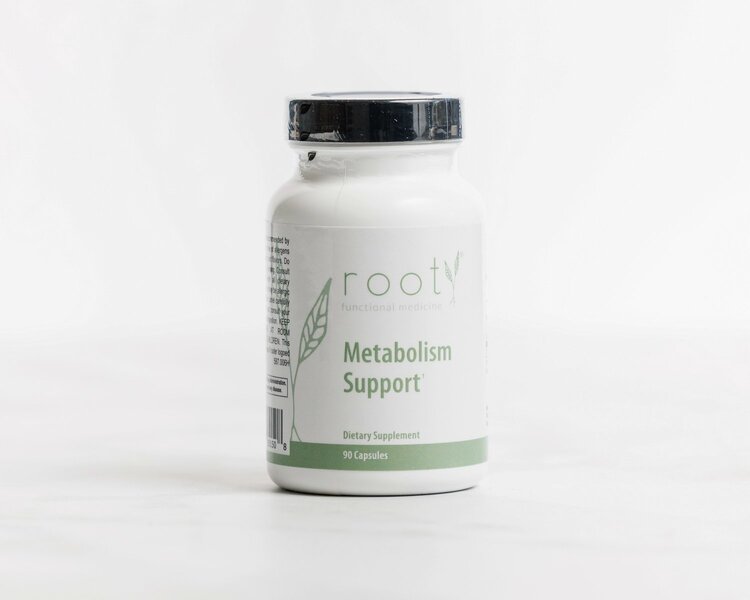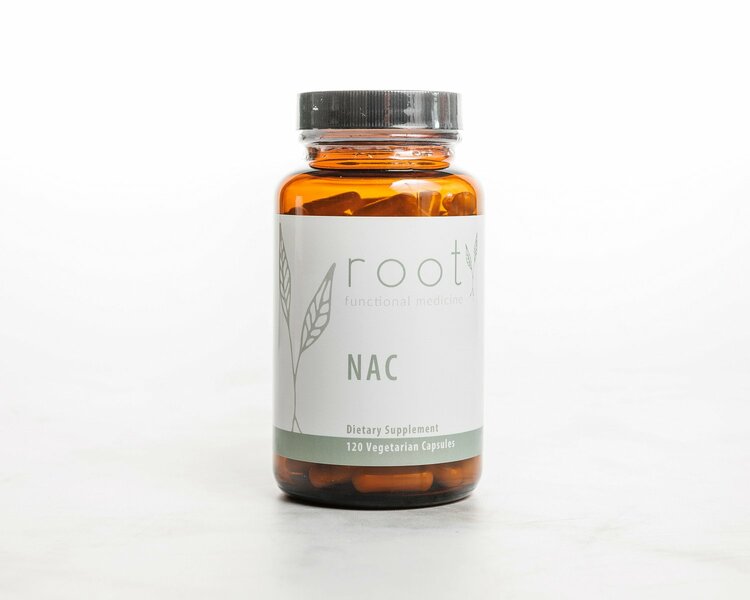
Functional Medicine Insulin Resistance
An estimated 40 percent of adults in the United States have insulin resistance, a hidden condition that often goes untreated in conventional medicine but can eventually lead to serious health issues like type 2 diabetes.
In this article, we will define insulin resistance, including symptoms and lab work, and discuss a functional medicine approach to improving blood sugar balance.
What is Insulin Resistance?
Insulin resistance is a condition where the body’s cells become less responsive to insulin, a hormone made by the pancreas that controls blood sugar levels. When insulin works properly, it helps move glucose (sugar) from the bloodstream into cells to be used as energy. However, when cells become resistant to insulin’s effects, the body requires more insulin to lower blood sugar levels, leading to higher levels of circulating insulin.
As insulin resistance progresses, the pancreas struggles to keep up with the demand, and blood sugar levels begin to rise, leading to higher fasting glucose levels. Over time and if left untreated, insulin resistance can develop into prediabetes or type 2 diabetes as the body can no longer maintain stable blood sugar levels.
Symptoms of Insulin Resistance
Insulin resistance often develops gradually and may not cause obvious symptoms in its early stages. However, subtle signs and symptoms can indicate its presence, including:
- Frequent hunger, even after a meal
- Sugar cravings
- Weight gain, particularly around the abdomen
- Fatigue
- Difficulty concentrating
- Skin changes, like dark patches in the folds of the skin, particularly in the neck or armpits
- High blood pressure
- High cholesterol levels
Insulin resistance can lead to frequent hunger and sugar cravings because the body’s cells are not efficiently absorbing glucose for energy. This lack of cellular energy signals to the brain that more fuel is needed, triggering cravings for quick, easily digestible sugars. Additionally, insulin resistance causes fluctuations in blood sugar levels, and these dips in energy create a strong urge for sugary foods to quickly boost blood sugar. Unfortunately, this puts you in a vicious cycle of cravings and energy crashes.
Testing for Insulin Resistance
Insulin resistance exists on a spectrum, with different degrees of severity that can evolve over time. Our functional medicine doctors recognize this spectrum and use a range of lab markers to assess early-stage insulin resistance, even before blood glucose or hemoglobin a1c levels rise.
Our Root Wellness Panel includes a variety of baseline labs to evaluate your overall health. Three of these labs specifically look for insulin resistance and blood sugar imbalances:
Fasting Insulin
High fasting insulin levels indicate the body is compensating for insulin resistance, even if blood glucose or A1c levels appear normal. While most labs indicate a “normal” level of fasting insulin to be < 18 uIU/mL, our clinicians prefer a more optimal range between 2 - 6 uIU/mL.
Fasting Glucose
As cells become less responsive to insulin, glucose stays in the bloodstream longer, gradually raising fasting glucose levels. We consider a fasting glucose > 90 mg/dl to be indicative of insulin resistance. Fasting glucose levels of 126 mg/dL or higher on multiple occasions suggest that insulin resistance has progressed to diabetes.
Hemoglobin A1c
Hemoglobin A1c (a1c) measures your average blood glucose levels over the past 2 to 3 months. High A1c levels indicate that blood sugar has been consistently high, making it a useful marker for identifying insulin resistance and diagnosing prediabetes (5.7-6.4%) or diabetes (6.5% or higher). Unlike fasting glucose, HbA1c provides a broader view of long-term blood
Root Cause Panel
Glucose, Fasting Insulin, HbA1c, Hepatic function, GGT, Standard Lipids, Lipoprotein (a), Full Thyroid Panel with Antibodies, Homocysteine, hsCRP, Ferritin, Vit B12, Vit D, Zinc, RBC Mag
$225.00
Eating for Insulin Resistance
The Root Plate™
Food is foundational for controlling blood sugar levels and treating insulin resistance. Our PFC method and Root Plate™ approach emphasize including protein, fat, and fiber-rich carbohydrates in every meal and snack. These macronutrients work together to nourish your body, prevent blood sugar spikes, and create a sustainable meal planning strategy.
To build your own Root Plate™ using the PFC method, start by filling half your plate with non-starchy vegetables. Then, add fiber-rich carbohydrates to one quarter of the plate, and high-quality protein to the other quarter. Finally, top your plate with 1 to 2 tablespoons of healthy fat.
CGM Guided Eating
Understanding how your body responds to these foods can take your health to the next level. That’s where continuous glucose monitoring (CGM) comes in. Through our Root membership program, we can prescribe CGMs so you can see in real time how your blood sugar reacts to different meals. With these insights, our dietitians can refine your nutrition plan to support optimal blood sugar balance and overall health.

Supplements for Insulin Resistance
Targeted supplements can be a powerful tool in treating insulin resistance. Functional medicine emphasizes using data from your lab work, symptoms, and individual health factors to choose the most effective supplement.
Inositol
Inositol, a vitamin-like compound produced naturally by the body, is effective in treating insulin resistance by improving the body’s sensitivity to insulin. A large study found that inositol supplements significantly reduced fasting glucose and insulin levels and improved markers of insulin resistance (1). This is especially beneficial for people with insulin-resistant conditions like polycystic ovary syndrome (PCOS), where inositol has been shown to help balance hormones, regulate menstrual cycles, and improve ovulation.
Myo & D-Chiro Inositol
REBRANDING SALE!
We’re making room for our new look. Stock up on Inositol and save 25% with code INOS25
$64.00
Magnesium
Magnesium is an essential mineral involved in hundreds of biochemical reactions in the body, including blood sugar regulation and insulin sensitivity. Many large studies show that magnesium supplements can improve insulin resistance and help stabilize blood glucose levels (2, 3). However, one of the studies suggested that supplementing with magnesium had better results if taken for longer than four months, compared to people who took it for less than this time (4).
Quality matters when it comes to magnesium supplementation. For example, magnesium oxide is poorly absorbed and can cause digestive side effects, like diarrhea or abdominal cramping. We prefer a better tolerated and highly absorbed form called magnesium glycinate. Shop magnesium in our Root Shop.
Magnesium Glycinate
Our favorite calming mineral that helps with over 300 functions in the body.
$34.00
Berberine
Berberine has considerable potential for managing blood sugar levels, making it a valuable option for those with type 2 diabetes and insulin resistance. Berberine works by enhancing insulin sensitivity and reducing glucose production in the liver. Studies indicate that berberine can significantly improve blood sugar control and lower hemoglobin a1c levels (5). Plus, berberine may also reduce cholesterol levels and promote weight loss (6, 7, 8). Read our article comparing the common diabetic drug Metformin versus Berberine.
NAC
N-acetyl-cysteine (NAC) is a powerful antioxidant that supports insulin sensitivity by reducing oxidative stress and inflammation, both of which are key contributors to insulin resistance. By boosting the production of glutathione, a critical antioxidant in the body, NAC helps protect cells from damage and improve the way they respond to insulin. Studies have shown that NAC can lower fasting insulin levels, making it a promising supplement for managing insulin resistance and promoting metabolic health.
Physical Activity
Exercise helps muscles use glucose more efficiently, improving insulin sensitivity and stabilizing blood sugar. Simple ways to add more activity to your daily routine include walking during breaks, taking the stairs instead of elevators, setting reminders to stretch or move every hour, and incorporating short home workouts. Consistent activity, even in small amounts, can have a significant impact on treating insulin resistance.
Key Takeaways: Functional Medicine Insulin Resistance
Treating insulin resistance with a functional medicine approach focuses on addressing root causes and optimizing metabolic health through personalized lifestyle and dietary changes. Eating for blood sugar balance, using targeted supplements, and increasing physical activity in your day are three foundational steps you can take to improve insulin resistance and reduce your risk of developing type 2 diabetes.

A New Way to Access Functional Medicine
Order your own labs and get the support you need. With Root Access, taking charge of your health through a root-cause, data-driven approach has never been easier.
Become an Access Member
Related Articles

Why am I not losing weight?
A deep dive into things that might be hindering your weight loss efforts including inflammation, insulin resistance, stress, and sleep.

GLP-1 Alternatives
Explore natural strategies to support GLP-1 production, including berberine, fiber, NAC, and optimizing gut health.




